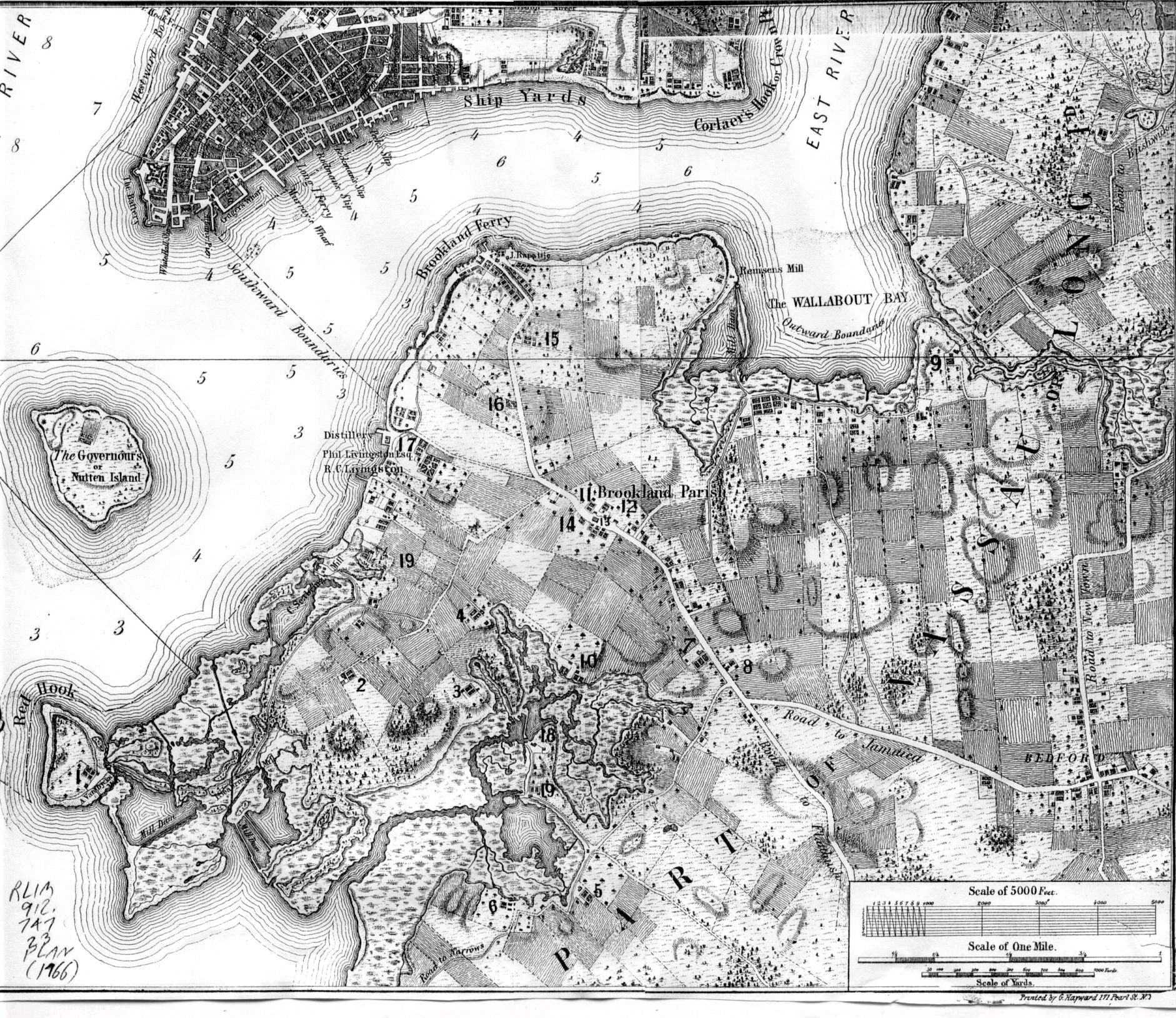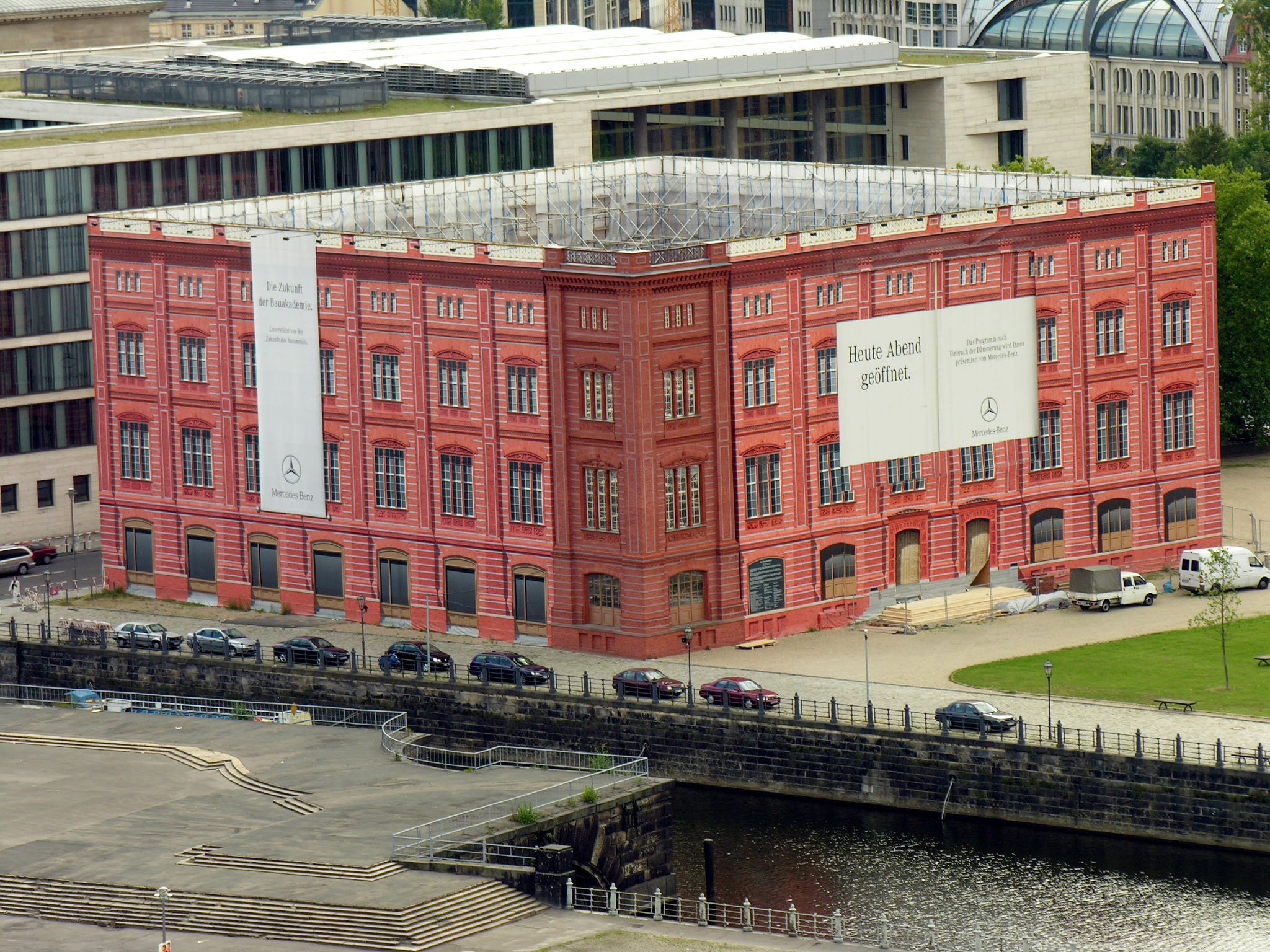|
Roebling
John Augustus Roebling (born Johann August Röbling; June 12, 1806 – July 22, 1869) was a German-born American Civil Engineering, civil engineer. He designed and built wire rope suspension bridges, in particular the Brooklyn Bridge, which has been designated as a National Historic Landmark and a National Historic Civil Engineering Landmark. Education John Röbling was born to Friederike Dorothea Röbling (née Muelleren) and Christoph Polykarpus Röbling. Recognizing his intelligence at a young age, Roebling's mother arranged for him to be tutored in mathematics and science at Erfurt by Ephraim Salomon Unger. He went to Erfurt when he was 15. In 1824 he passed his Surveyor's examination and returned home for a year. In 1824 he enrolled for two semesters at the Bauakademie in Berlin, where he studied architecture and engineering under Martin Friedrich Rabe (1765–1856), bridge construction and foundation construction under Johann Friedrich Dietlein (1782–1837), hydraulics u ... [...More Info...] [...Related Items...] OR: [Wikipedia] [Google] [Baidu] |
Brooklyn Bridge
The Brooklyn Bridge is a hybrid cable-stayed/ suspension bridge in New York City, spanning the East River between the boroughs of Manhattan and Brooklyn. Opened on May 24, 1883, the Brooklyn Bridge was the first fixed crossing of the East River. It was also the longest suspension bridge in the world at the time of its opening, with a main span of and a deck above mean high water. The span was originally called the New York and Brooklyn Bridge or the East River Bridge but was officially renamed the Brooklyn Bridge in 1915. Proposals for a bridge connecting Manhattan and Brooklyn were first made in the early 19th century, which eventually led to the construction of the current span, designed by John A. Roebling. The project's chief engineer, his son Washington Roebling, contributed further design work, assisted by the latter's wife, Emily Warren Roebling. Construction started in 1870, with the Tammany Hall-controlled New York Bridge Company overseeing construction, although nume ... [...More Info...] [...Related Items...] OR: [Wikipedia] [Google] [Baidu] |
John Roebling House
John Roebling House is a historic home located at Saxonburg, Pennsylvania, Saxonburg, Butler County, Pennsylvania. It was built between 1832 and 1835, and is a two-story, brick and frame dwelling on a partially exposed basement. A two-story rear addition was built about 1904. Included in the listing is the Roebling Shop. It was built in 1841, and is a one-story, gable-roofed frame building covered in clapboard. It was the shop of noted civil engineer John A. Roebling (1806-1869), who was also a founder of Saxonburg. ''Note:'' This includes Sometime after its listing, the shop was moved from its original location at the intersection of Rebecca and Main Streets, to Roebling Park, along Rebecca Street. It was listed on the National Register of Historic Places in 1976. References Houses on the National Register of Historic Places in Pennsylvania Houses completed in 1835 Houses in Butler County, Pennsylvania Relocated buildings and structures in Pennsylvania National Reg ... [...More Info...] [...Related Items...] OR: [Wikipedia] [Google] [Baidu] |
Saxonburg, Pennsylvania
Saxonburg is a borough in Butler County, Pennsylvania, United States. It is part of the Pittsburgh metropolitan area in the western part of the state. It was founded in 1832 by F. Carl Roebling and his younger brother John as a German farming colony. The population of Saxonburg was 1,525 as of the 2010 census. The city was first named "Germania" and "Sachsenburg" before its name was Anglicized to the present one. After Roebling returned to his engineering career, he developed his innovation of wire rope in a workshop here. He became known for his design of suspension bridges, including the most famous one, the Brooklyn Bridge in New York. History Founded in 1832 by Friedrich Carl Roebling and his younger brother John A. Roebling, the frontier farming community was initially called "Germania". This was changed to "Sachsenburg" and later anglicized to Saxonburg. Roebling had emigrated with his brother Carl and a group of pioneers from Prussia (Germany) in 1831 to flee political u ... [...More Info...] [...Related Items...] OR: [Wikipedia] [Google] [Baidu] |
Johann Adolphus Etzler
John Adolphus Etzler (1791–1846?) was a German engineer and inventor who immigrated to the United States in 1831 with a vision of creating a technological utopia. He was traveling with a group from Prussia, who included younger engineers John A. Roebling and his brother Carl. Because of disagreements, the group broke up. Etzler and most of the group first settled near Pittsburgh, Pennsylvania. In the early 1840s Etzler and several dozen of his followers moved to the tropics, to set up utopian communities to use his inventions in Venezuela and Trinidad. He believed his inventions could work off natural forces and avoid human labor. Their efforts failed and many people died. Etzler survived but disappeared from the record. Time in the US In 1833 in Pittsburgh, Etzler published his best-known work, a prospectus titled ''The Paradise within the Reach of all Men''. It outlined detailed, visionary plans to harness the energy of wind, water and sun to benefit mankind. This followed ... [...More Info...] [...Related Items...] OR: [Wikipedia] [Google] [Baidu] |
National Historic Civil Engineering Landmark
__NOTOC__ The following is a list of Historic Civil Engineering Landmarks as designated by the American Society of Civil Engineers since it began the program in 1964. The designation is granted to projects, structures, and sites in the United States (National Historic Civil Engineering Landmarks) and the rest of the world (International Historic Civil Engineering Landmarks). As of 2019, there are over 280 landmarks that have been approved by the ASCE Board of Direction. Sections or chapters of the American Society of Civil Engineers may also designate state or local landmarks within their areas; those landmarks are not listed here. See also *[...More Info...] [...Related Items...] OR: [Wikipedia] [Google] [Baidu] |
Suspension Bridge
A suspension bridge is a type of bridge in which the deck (bridge), deck is hung below suspension wire rope, cables on vertical suspenders. The first modern examples of this type of bridge were built in the early 1800s. Simple suspension bridges, which lack vertical suspenders, have a long history in many mountainous parts of the world. Besides the bridge type most commonly called suspension bridges, covered in this article, there are other types of suspension bridges. The type covered here has cables suspended between towers, with vertical ''suspender cables'' that transfer the Structural load#Live load, imposed loads, transient load, live and Structural load#Dead load, dead loads of the deck below, upon which traffic crosses. This arrangement allows the deck to be level or to arc upward for additional clearance. Like other suspension bridge types, this type often is constructed without the use of falsework. The suspension cables must be anchored at each end of the bridge, s ... [...More Info...] [...Related Items...] OR: [Wikipedia] [Google] [Baidu] |
Mühlhausen
Mühlhausen () is a city in the north-west of Thuringia, Germany, north of Niederdorla, the country's geographical centre, north-west of Erfurt, east of Kassel and south-east of Göttingen. Mühlhausen was first mentioned in 967 and became one of the most important cities in central Germany in the late Middle Ages. In the mid-13th century, it became a '' Freie Reichsstadt'', an independent and republican self-ruled member of the Holy Roman Empire, controlling an area of approximately and 19 regional villages. Due to its long-distance trade, Mühlhausen was prosperous and influential with a population of 10,000 around 1500. Because it was spared from later destruction, Mühlhausen today has a great variety of historical buildings with one of the largest medieval city centres remaining in Germany, covering a surface of more than 50 hectares within the inner city wall and approximately 200 hectares overall. There are eleven Gothic churches, several patricians’ houses and ... [...More Info...] [...Related Items...] OR: [Wikipedia] [Google] [Baidu] |
Butler County, Pennsylvania
Butler County is a county in the Commonwealth of Pennsylvania. It is part of Western Pennsylvania. As of the 2020 census, the population was 193,763. Its county seat is Butler. Butler County was created on March 12, 1800, from part of Allegheny County and named in honor of General Richard Butler, a hero of the American Revolution. Butler County is part of the Pittsburgh, PA Metropolitan Statistical Area. History Some famous inventions and discoveries were made in Butler County. Saxonburg was founded as a Prussian colony by John A. Roebling, a civil engineer, and his brother Carl. After farming for a time, Roebling returned to engineering, and invented his revolutionary "wire rope.", which he first produced at Saxonburg. He moved the operation to Trenton, New Jersey. He is best known for designing his most famous work, the Brooklyn Bridge, but designed and built numerous bridges in Pittsburgh and other cities as well. At what is now known as Oil Creek, Butler County reside ... [...More Info...] [...Related Items...] OR: [Wikipedia] [Google] [Baidu] |
Wire Rope
Steel wire rope (right hand lang lay) Wire rope is several strands of metal wire twisted into a helix forming a composite ''rope'', in a pattern known as ''laid rope''. Larger diameter wire rope consists of multiple strands of such laid rope in a pattern known as ''cable laid''. In stricter senses, the term ''wire rope'' refers to a diameter larger than , with smaller gauges designated cable or cords. Initially wrought iron wires were used, but today steel is the main material used for wire ropes. Historically, wire rope evolved from wrought iron chains, which had a record of mechanical failure. While flaws in chain links or solid steel bars can lead to catastrophic failure, flaws in the wires making up a steel cable are less critical as the other wires easily take up the load. While friction between the individual wires and strands causes wear over the life of the rope, it also helps to compensate for minor failures in the short run. Wire ropes were developed starting with min ... [...More Info...] [...Related Items...] OR: [Wikipedia] [Google] [Baidu] |
Brooklyn Bridge Poŝtmarko DE 2006
Brooklyn () is a borough of New York City, coextensive with Kings County, in the U.S. state of New York. Kings County is the most populous county in the State of New York, and the second-most densely populated county in the United States, behind New York County (Manhattan). Brooklyn is also New York City's most populous borough,2010 Gazetteer for New York State . Retrieved September 18, 2016. with 2,736,074 residents in 2020. Named after the Dutch village of , ... [...More Info...] [...Related Items...] OR: [Wikipedia] [Google] [Baidu] |
Brooklyn Bridge By David Shankbone
Brooklyn () is a borough of New York City, coextensive with Kings County, in the U.S. state of New York. Kings County is the most populous county in the State of New York, and the second-most densely populated county in the United States, behind New York County (Manhattan). Brooklyn is also New York City's most populous borough,2010 Gazetteer for New York State . Retrieved September 18, 2016. with 2,736,074 residents in 2020. Named after the Dutch village of |
Bauakademie
The Bauakademie (''Building Academy'') in Berlin, Germany, was a higher education school for the art of building to train master builders. It originated from the construction department of the Academy of Fine Arts and Mechanical Sciences (from 1704), which emphasized the aesthetic elements of art of building while ignoring the technical. Thus, the governmental Upper Building Department ("UBD") decided to establish an entirely new building educational institution named "Bauakademie". It was founded on 18 March 1799 by King Frederick William III and, in 1801, incorporated into the UBD, as its section. History The building of the ''Building Academy'' (''Bauakademie''), built between 1832 and 1836 (later known as ''Schinkel's Bauakademie''), is considered one of the forerunners of modern architecture due to its hithertofore uncommon use of red brick and the relatively streamlined facade of the building. Designed by Karl Friedrich Schinkel, it was built near the Berlin City Palac ... [...More Info...] [...Related Items...] OR: [Wikipedia] [Google] [Baidu] |

.jpg)



.jpg)


